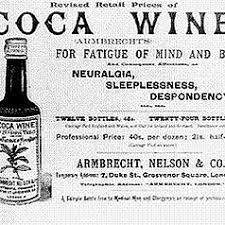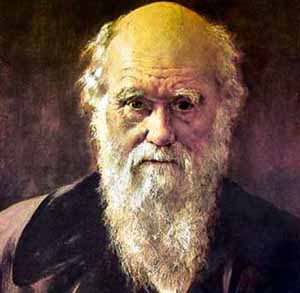THE HISTORY OF MEDICINE IN EGYPT:
When the medicine of ancient Egypt is examined, the picture becomes clearer. The first physician to emerge is Imhotep, chief minister to King Djoser in the 3rd millennium bce, who designed one of the earliest pyramids, the Step Pyramid at Ṣaqqārah, and who was later regarded as the Egyptian god of medicine and identified with the Greek god Asclepius. Surer knowledge comes from the study of Egyptian papyri, especially the Ebers and Edwin Smith papyri discovered in the 19th century. The former is a list of remedies, with appropriate spells or incantations, while the latter is a surgical treatise on the treatment of wounds and other injuries.
Contrary to what might be expected, the widespread practice of embalming the dead body did not stimulate study of human anatomy. The preservation of mummies has, however, revealed some of the diseases suffered at that time, including arthritis, tuberculosis of the bone, gout, tooth decay, bladder stones, and gallstones; there is evidence too of the parasitic disease schistosomiasis, which remains a scourge still. There seems to have been no syphilis or rickets.
The search for information on ancient medicine leads naturally from the papyri of Egypt to Hebrew literature. Though the Bible contains little on the medical practices of ancient Israel, it is a mine of information on social and personal hygiene. The Jews were indeed pioneers in matters of public health.
THE HISTORY OF HEALTH AND MEDICINE IN INDIA.
The period of Vedic medicine lasted until about 800 bce. The Vedas are rich in magical practices for the treatment of diseases and in charms for the expulsion of the demons traditionally supposed to cause diseases. The chief conditions mentioned are fever (takman), cough, consumption, diarrhea, dropsy, abscesses, seizures, tumours, and skin diseases (including leprosy). The herbs recommended for treatment are numerous.
The golden age of Indian medicine, from 800 bce until about 1000 ce, was marked especially by the production of the medical treatises known as the Charaka-samhita and Sushruta-samhita, attributed respectively to Charaka, a physician, and Sushruta, a surgeon. Estimates place the Charaka-samhita in its present form as dating from the 1st century ce, although there were earlier versions. The Sushruta-samhita probably originated in the last centuries bce and had become fixed in its present form by the 7th century ce. Of somewhat lesser importance are the treatises attributed to Vagbhata. All later writings on Indian medicine were based on these works.
Because Hindus were prohibited by their religion from cutting the dead body, their knowledge of anatomy was limited. The Sushruta-samhita recommends that a body be placed in a basket and sunk in a river for seven days. On its removal the parts could be easily separated without cutting. As a result of these crude methods, the emphasis in Hindu anatomy was given first to the bones and then to the muscles, ligaments, and joints. The nerves, blood vessels, and internal organs were very imperfectly known.
The Hindus believed that the body contains three elementary substances, microcosmic representatives of the three divine universal forces, which they called spirit (air), phlegm, and bile (comparable to the humours of the Greeks). Health depends on the normal balance of these three elementary substances. The seven primary constituents of the body—blood, flesh, fat, bone, marrow, chyle, and semen—are produced by the action of the elementary substances. Semen was thought to be produced from all parts of the body and not from any individual part or organ.
Both Charaka and Sushruta state the existence of a large number of diseases (Sushruta says 1,120). Rough classifications of diseases are given. In all texts, “fever,” of which numerous types are described, is regarded as important. Phthisis (wasting disease, especially pulmonary tuberculosis) was apparently prevalent, and the Hindu physicians knew the symptoms of cases likely to terminate fatally. Smallpox was common, and it is probable that smallpox inoculation was practiced.
Hindu physicians employed all five senses in diagnosis. Hearing was used to distinguish the nature of the breathing, alteration in voice, and the grinding sound produced by the rubbing together of broken ends of bones. They appear to have had a good clinical sense, and their discourses on prognosis contain acute references to symptoms that have grave import. Magical beliefs still persisted, however, until late in the classical period; thus, the prognosis could be affected by such fortuitous factors as the cleanliness of the messenger sent to fetch the physician, the nature of his conveyance, or the types of persons the physician met on his journey to the patient.
Dietetic treatment was important and preceded any medicinal treatment. Fats were much used, internally and externally. The most important methods of active treatment were referred to as the “five procedures”: the administration of emetics, purgatives, water enemas, oil enemas, and sneezing powders. Inhalations were frequently administered, as were leeching, cupping, and bleeding.
The Indian materia medica was extensive and consisted mainly of vegetable drugs, all of which were from indigenous plants. Charaka knew 500 medicinal plants, and Sushruta knew 760. But animal remedies (such as the milk of various animals, bones, gallstones) and minerals (sulfur, arsenic, lead, copper sulfate, gold) were also employed. The physicians collected and prepared their own vegetable drugs. Among those that eventually appeared in Western pharmacopoeias were cardamom and cinnamon.
As a result of the strict religious beliefs of the Hindus, hygienic measures were important in treatment. Two meals a day were decreed, with indications of the nature of the diet, the amount of water to be drunk before and after the meal, and the use of condiments. Bathing and care of the skin were carefully prescribed, as were cleansing of the teeth with twigs from named trees, anointing of the body with oil, and the use of eyewashes.
In surgery, ancient Hindu medicine reached its zenith. Operations performed by Hindu surgeons included excision of tumours, incision and draining of abscesses, punctures to release fluid in the abdomen, extraction of foreign bodies, repair of anal fistulas, splinting of fractures, amputations, cesarean sections, and stitching of wounds.
A broad array of surgical instruments were used. According to Sushruta, the surgeon should be equipped with 20 sharp and 101 blunt instruments of various descriptions. The instruments were largely of steel. Alcohol seems to have been used as a narcotic during operations, and bleeding was stopped by hot oils and tar.
In two types of operations especially, the Hindus were outstanding. Stone in the bladder (vesical calculus) was common in ancient India, and the surgeons frequently removed the stones by lateral lithotomy. They also introduced plastic surgery. Amputation of the nose was one of the prescribed punishments for adultery, and repair was carried out by cutting from the patient’s cheek or forehead a piece of tissue of the required size and shape and applying it to the stump of the nose. The results appear to have been tolerably satisfactory, and the modern operation is certainly derived indirectly from this ancient source. Hindu surgeons also operated on cataracts by couching, or displacing the lens to improve vision.
















